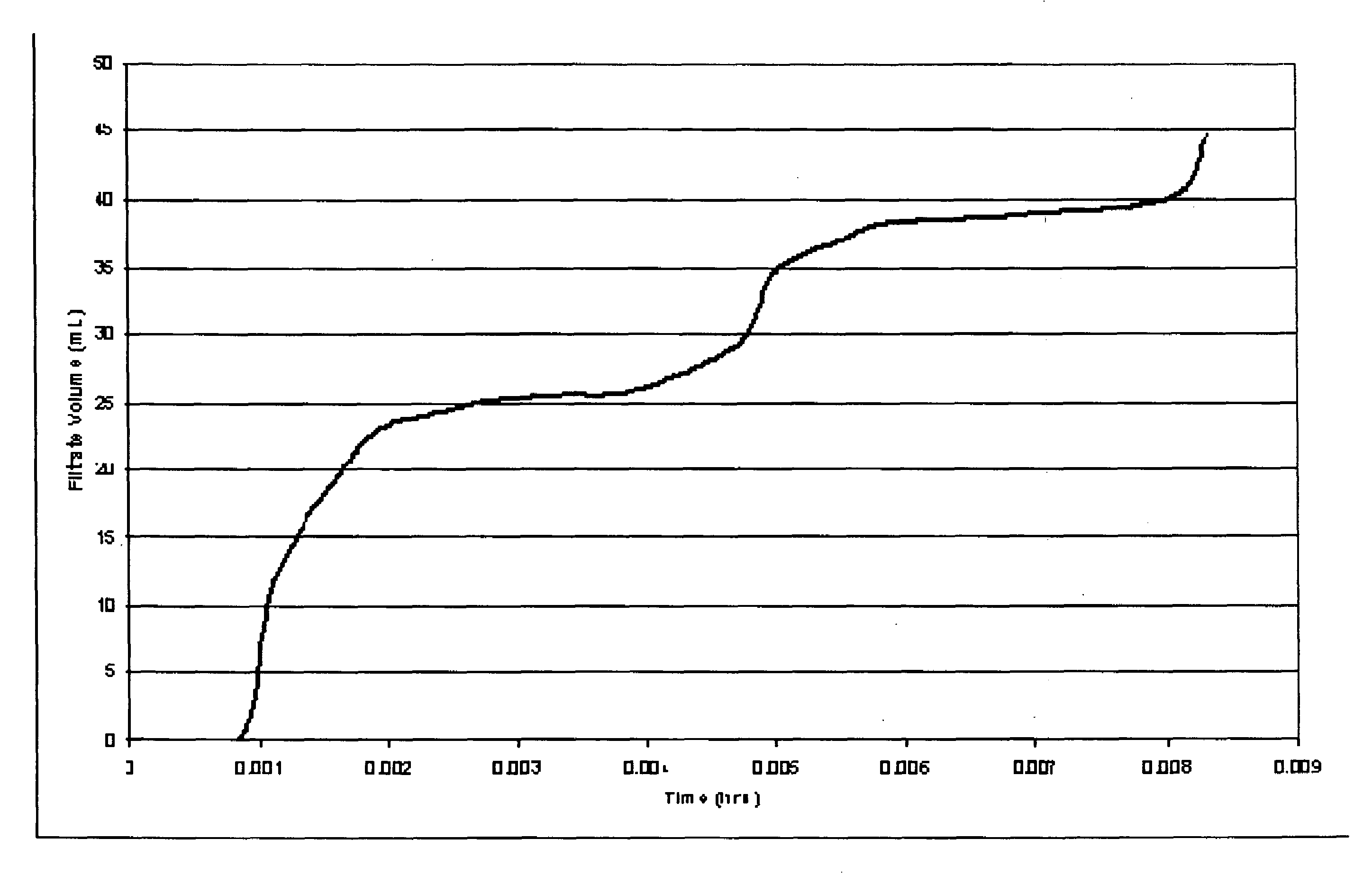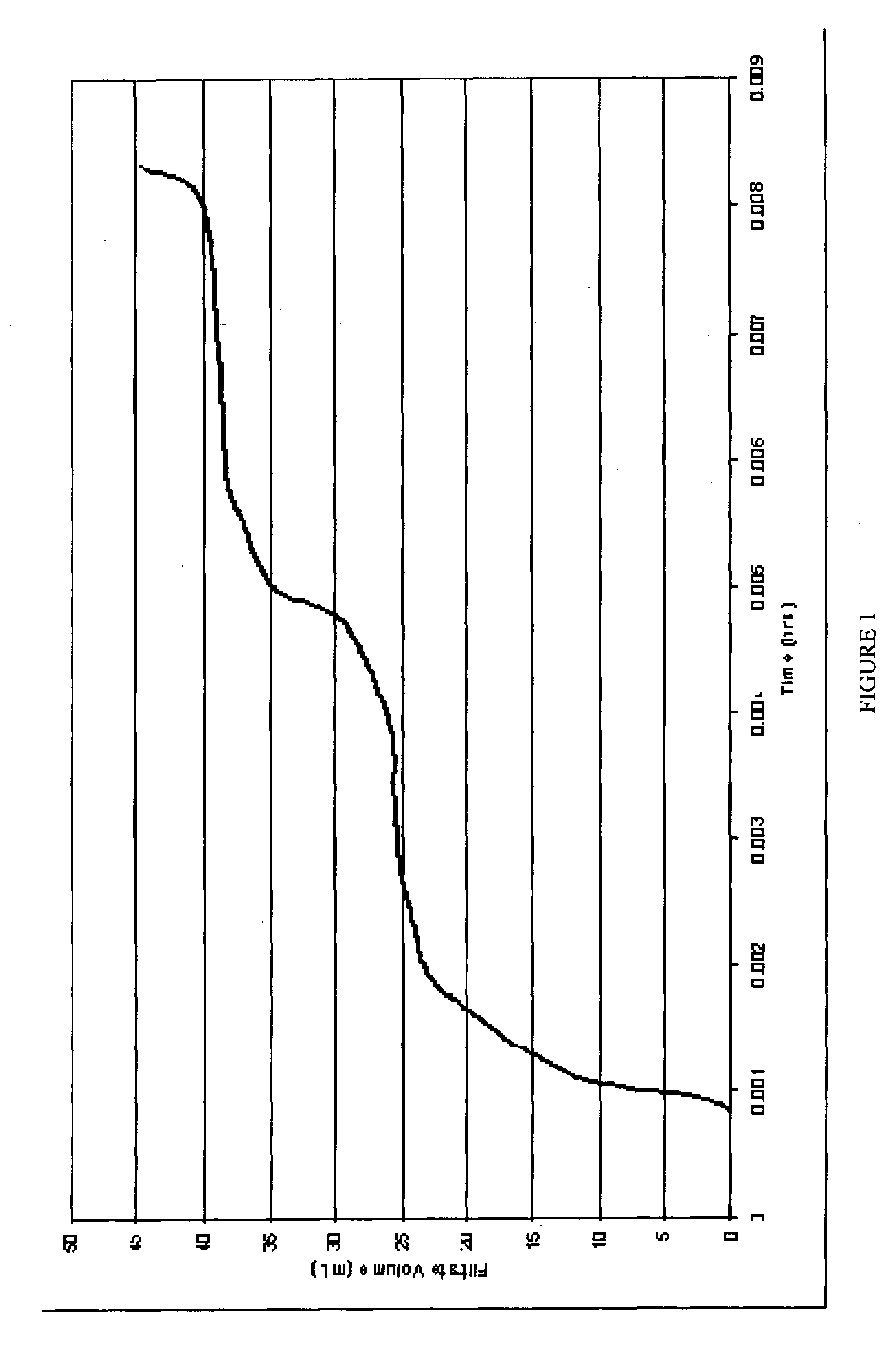Methods for treating a subterranean formation with a treatment fluid containing a gelling agent and subsequently breaking the gel with an oxidizer
a technology of gelling agent and treatment fluid, which is applied in the direction of sealing/packing, chemistry apparatus and processes, and wellbore/well accessories. it can solve the problems of destroying the filter cake, affecting the operation of the pump, and affecting the operation of the filter
- Summary
- Abstract
- Description
- Claims
- Application Information
AI Technical Summary
Problems solved by technology
Method used
Image
Examples
example 1
[0069]This example illustrates be ability of an oxidizer to break a filter cake formed of gelling agent comprising a polymer grafted with a vinyl phosphonic acid or derivative thereof and a crosslinking agent.
[0070]A filter cake was formed of a treatment fluid having a gelling agent comprising a polymer grafted with a vinyl phosphonic acid or derivative thereof; and a crosslinking agent and having polylactic acid as an internal breaker mixed with 9.6 lbs per gallon NaBr / KCl brine. A Fann Model 90 Dynamic High Pressure, High Temperature (“HPHT”) test was conducted on the filter cake. The filter cake had already been in contact with polylactic acid internal breaker for a period of 18 days without evidence of substantial leakoff. Although the polylactic acid internal breaker appeared to have reversed the crosslinking of the filter cake as well as to have substantially reduced the viscosity of the filter cake, the filter cake was still intact and holding pressure. Thus, the internal bre...
example 2
[0072]The purpose of this test was to determine which of the components in a wash containing an oxidizer, i.e., a wash comprising water, boric acid, hydrochloric acid, and ammonium bifluoride (“ABF”), with an oxidizer of 100 lbs / MGal sodium persulfate or sodium perborate was causing the crosslinked gel to break.
[0073]This example was based on a well having a bottom hole temperature of 178° F. (81° C.) and a brine / density type of 9.6 ppg KCl / NaBr Brine.
[0074]In general, the crosslinked gel was aqueous containing a gelling agent comprising a polymer grafted with a vinyl phosphonic acid and 10 grams / Liter of magnesium peroxide, which is commercially available from TBC Brinadd, as a crosslinker and delayed in situ breaker. The grafted polymer was produced by the reaction of water soluble polymer such as hydroxyethyl celluslose (“HEC”) and a vinyl phosophonic acid in the presence of a redox system as disclosed in U.S. Pat. No. 5,304,620, which is incorporated herein by reference.
[0075]On...
PUM
| Property | Measurement | Unit |
|---|---|---|
| weight | aaaaa | aaaaa |
| valence state | aaaaa | aaaaa |
| particle size | aaaaa | aaaaa |
Abstract
Description
Claims
Application Information
 Login to View More
Login to View More - R&D Engineer
- R&D Manager
- IP Professional
- Industry Leading Data Capabilities
- Powerful AI technology
- Patent DNA Extraction
Browse by: Latest US Patents, China's latest patents, Technical Efficacy Thesaurus, Application Domain, Technology Topic, Popular Technical Reports.
© 2024 PatSnap. All rights reserved.Legal|Privacy policy|Modern Slavery Act Transparency Statement|Sitemap|About US| Contact US: help@patsnap.com









